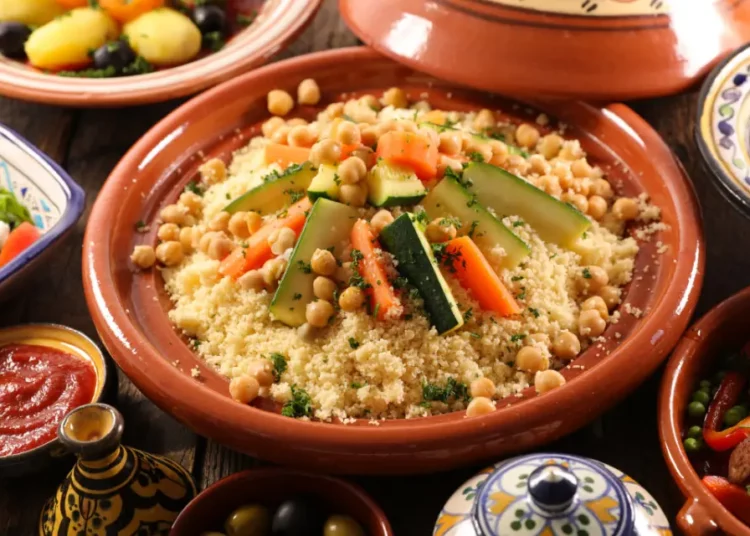Traditional Arabic meals often revolve around shared platters, beginning with mezze, a vibrant assortment of dips, salads, and finger foods that promote mindful, social eating. Staples like chickpeas, lentils, garlic, tahini, yogurt, and olive oil offer both flavor and nutritional value. Meats such as lamb and chicken are usually grilled, not fried, and are paired with fresh vegetables rather than heavy starches.
At the heart of Arabic cuisine is an emphasis on real, unprocessed food, a key element of any healthy diet. Meals are typically balanced with fiber-rich grains like bulgur or freekeh, lean proteins, and healthy fats. With bold spices like cumin, coriander, sumac, za’atar, and cinnamon, there’s little need for added sugar or salt to make dishes deeply satisfying.
The Heart Of Arabic Healthy Eating
Chickpeas: A plant-based protein powerhouse, chickpeas are rich in fiber, iron, and B vitamins. They help regulate blood sugar and support digestion.
Olive Oil: A staple in Arabic cooking, extra virgin olive oil is a heart-healthy fat known to reduce inflammation and improve cholesterol levels.
Yogurt: Often enjoyed plain or with cucumber and mint, Arabic-style yogurt is probiotic-rich, good for gut health, and a natural source of calcium and protein.
Herbs and Spices: From mint and parsley to turmeric and cardamom, the Arabic spice rack is a nutritional treasure trove loaded with antioxidants and medicinal properties.
Recipe : Mujaddara (Lentils and Rice with Caramelized Onions)
A comforting, plant-based dish common in Levantine cuisine—simple, satisfying, and incredibly nutritious.
Ingredients:
1 cup brown or green lentils, rinsed
¾ cup long-grain rice or bulgur
3 large onions, thinly sliced
3 tablespoons olive oil
1 teaspoon ground cumin
Salt and black pepper to taste
Fresh parsley and lemon wedges for garnish (optional)
Instructions:
Cook the Lentils: In a medium pot, boil lentils in 3 cups of water for about 15 minutes until slightly tender. Do not overcook.
Add Rice: Stir in the rice, 1 teaspoon of salt, and ½ teaspoon of cumin. Add more water if needed (just enough to cover the rice and lentils). Cover and simmer on low until the rice is fully cooked and water is absorbed (about 15–20 minutes).
Caramelize the Onions: While the lentils and rice are cooking, heat olive oil in a pan over medium heat. Add the sliced onions and cook slowly, stirring frequently, until they are golden brown and crispy (about 20–25 minutes). This step gives mujaddara its signature depth of flavor.
Combine: Fluff the lentil-rice mixture, season with black pepper and more cumin if desired, and top with caramelized onions.
Serve: Garnish with parsley and serve with a side of plain yogurt or a fresh cucumber-tomato salad.
Note;
Arabic cuisine brings wellness to the table in a way that is both culturally rich and nutritionally balanced. So, the next time you’re looking for a meal that nourishes both body and soul, reach for a dish from the Arabic kitchen.











